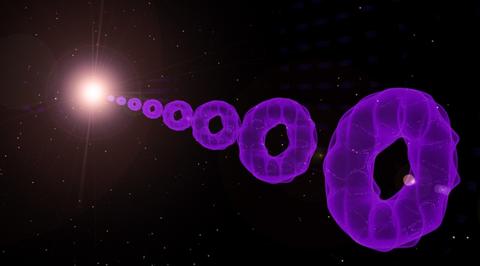
When the universe was very young – about a trillionth of a trillionth of a trillionth of a second after the Big Bang – it underwent a sudden explosive expansion that shaped the distribution of matter and radiation in the cosmos. More than 13 billion years later, the presumed effects of cosmic “inflation” can only be studied indirectly.
Now NIST scientists and colleagues at the University of Maryland and the Joint Quantum Institute (JQI) have created what may be a valuable, microscopic model for the dynamics of inflation. They coaxed a trapped population of a few hundred thousand ultra-cold sodium atoms into an exotic, compressed state called a Bose-Einstein condensate. When the trapped atoms were allowed to expand rapidly, they exhibited many of the same dynamics thought to be present in cosmic inflation. For example, sound-like compression waves in the atomic cloud were elongated in a way that closely resembles the well-known astronomical “red shift” in which light wavelengths are stretched out as the universe enlarges.
For a detailed description of the published results, see the news release at JQI’s website.

